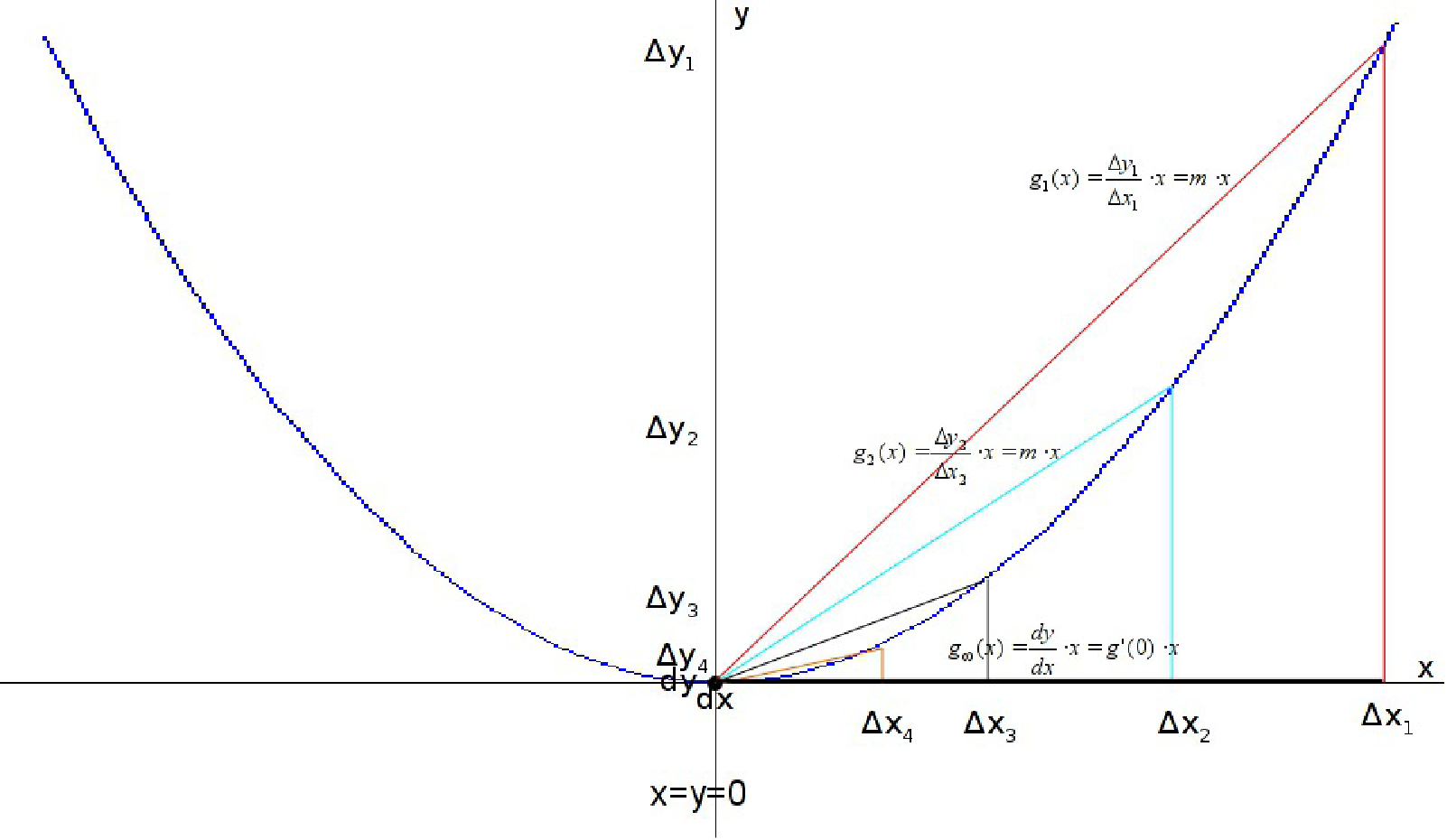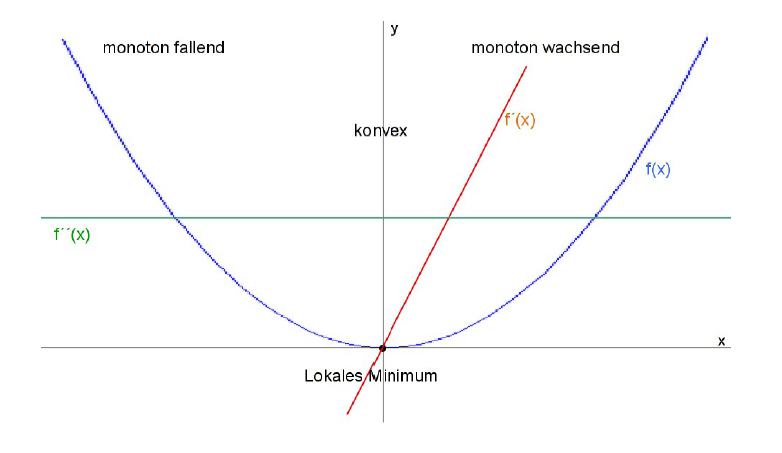Stetigkeit von Funktionen
EineFunktion : ist stetig bei , wenn gilt, dass der linksseitige und der rechtsseitige Grenzwert gleich dem Funktionswert sind:
Andere Definition: Zu gegebenem gibt es ein , so dass gilt:
Anschaulich: Die Funktion macht keine Sprünge!
Differentialrechnung
Ableitung von an der Stelle :
Ableitung an allen Stellen ergibt wieder eine neue Funktion

Beispiel: Ableitung von :
Herleitung der Exponentialfunktion. Gegeben mit beliebigen .
Gesucht sind die Koeffizienten , so dass :
Koeffizientenvergleich ergibt:
mit der Lösung
Weitere Ableitungen:
Monotonie: Ist die Ableitung an einer Stelle größer , so weist die Tangente nach oben und die Funktion selbst ist bei monoton wachsend.
Ist die Ableitung an einer Stelle gleich , so hat die Funktion bei eine waagrechte Tangente:
lokales Maximum oder Minimum
Sattelpunkt
Ist die zweite Ableitung an einer Stelle größer , so weist die Tangente der Ableitung nach oben und die Ableitung selbst ist monoton wachsend.Die Funktion selbst ist dann bei konvex gekrümmt:

Ableitungsregeln
Kettenregel (gilt und , so gilt auch ):
Kurvendiskussion der Funktion
mit den Ableitungen
Nullstellen von sind . Somit gilt für und
Polstellen von sind . Für ist monotonfallend. Für ist monoton wachsend. Für ist monoton fallend.
Nullstelle von : wobei .
Für ist und damit konvex.
Für ist und damit konkav.
Grenzwertbetrachtung:

Aufgaben
Laden
Laden
Laden
